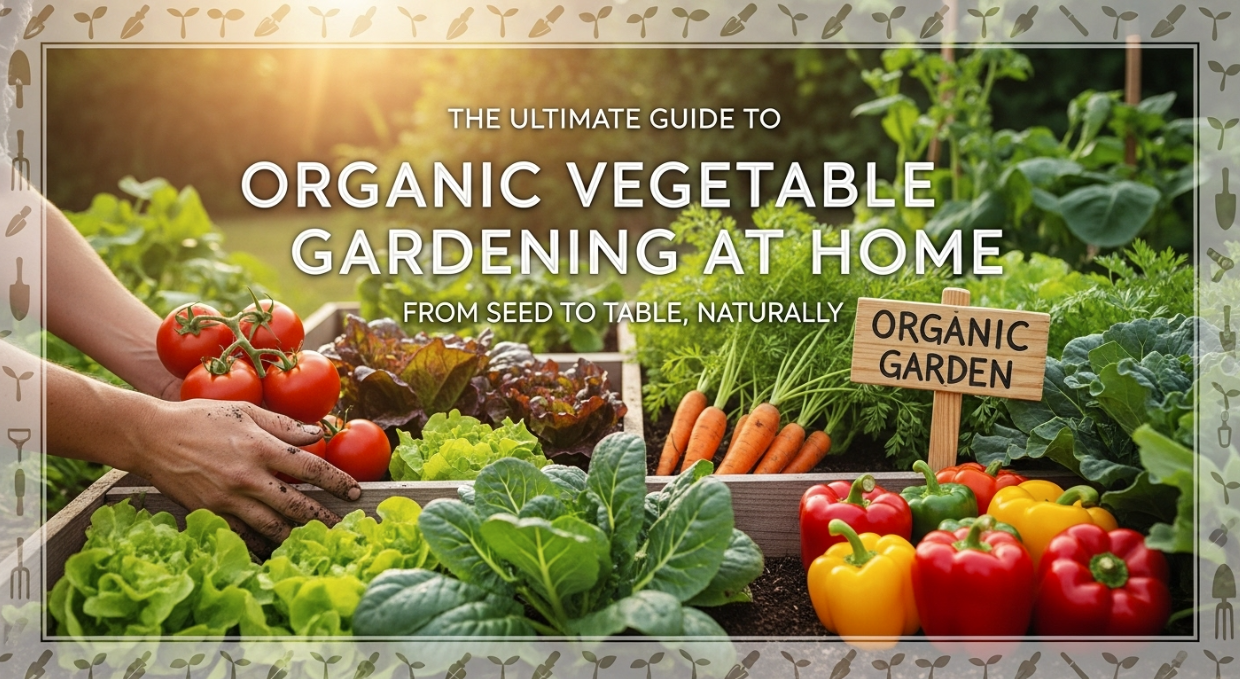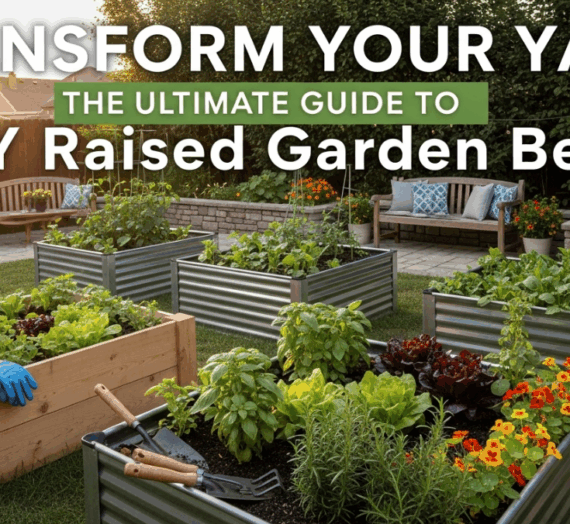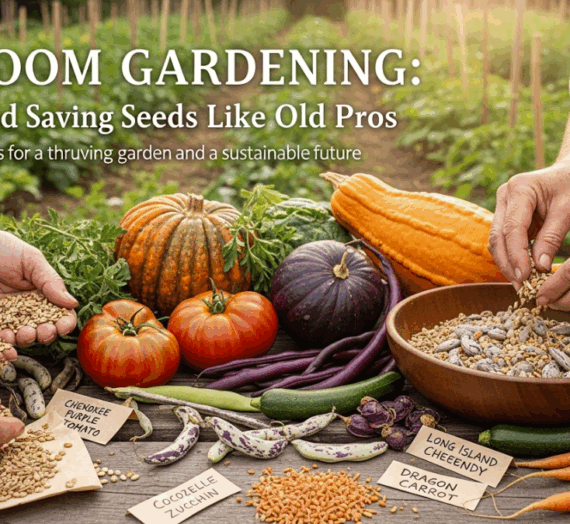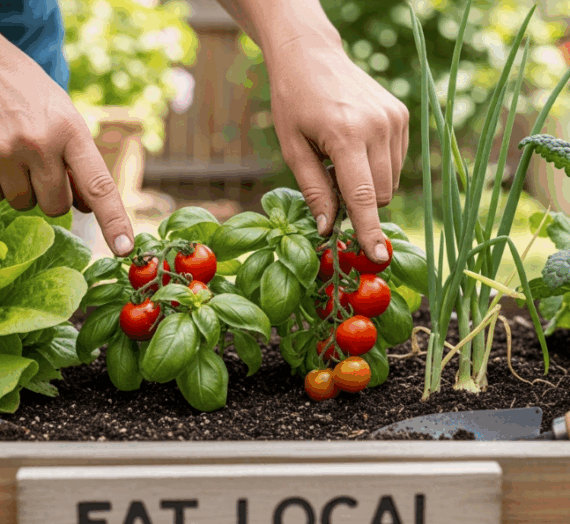
Introduction
Imagine harvesting fresh, pesticide-free vegetables right from your backyard. Organic vegetable gardening not only saves you money but also ensures that your family eats clean, healthy produce. It’s a sustainable, eco-conscious practice that’s gaining momentum among homeowners and urban dwellers alike. This guide will help you start and maintain a successful organic vegetable garden, even if you’re a complete beginner. For more information, see Google Search on organic vegetable gardening benefits or Bing Search on organic vegetable gardening benefits.
What is Organic Vegetable Gardening?
Organic gardening is a method of growing vegetables without the use of synthetic fertilizers, pesticides, or genetically modified organisms (GMOs). Instead, it relies on natural processes like composting, mulching, and companion planting. The goal is to create a self-sustaining ecosystem that enriches the soil and produces nutrient-rich food.
Benefits of Going Organic
Organic vegetable gardening offers numerous advantages: improved soil health, better-tasting produce, reduced exposure to harmful chemicals, and a lower environmental impact. It also encourages biodiversity and helps reduce your carbon footprint.
Planning Your Organic Garden
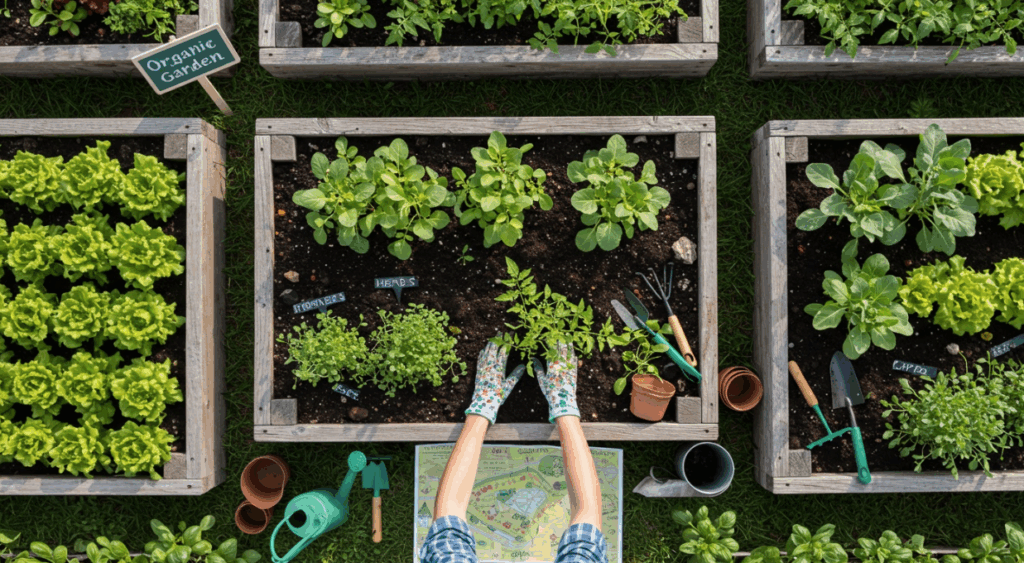



Before planting, take time to design your garden layout. Determine the available space, sunlight exposure, and the types of vegetables you want to grow. Raised beds are a popular option for organic gardening because they allow for better drainage and easier soil management.
Choosing the Right Vegetables
Select vegetables suited to your climate and season. Tomatoes, lettuce, carrots, cucumbers, and kale are excellent choices for beginners. Opt for heirloom seeds or organic-certified varieties to ensure non-GMO, high-quality produce.
Soil Preparation and Composting
Healthy soil is the cornerstone of organic gardening. Start by testing your soil’s pH and nutrient levels. Organic composting improves soil texture, provides essential nutrients, and encourages beneficial microbes. Create your compost pile using kitchen scraps, dry leaves, and grass clippings for a nutrient-dense amendment.
How to Compost Effectively
Layer your compost with greens (nitrogen-rich items like fruit peels) and browns (carbon-rich materials like cardboard). Turn it regularly to aerate and speed up decomposition. Within weeks, you’ll have black, crumbly compost ready to nourish your vegetables.
Building Raised Beds
Raised beds help control soil quality, prevent erosion, and reduce weed growth. Use untreated wood or recycled materials to create beds that are 6–12 inches deep. Fill them with a mix of compost, topsoil, and peat moss for optimal vegetable growth.
Spacing and Layout Tips
Follow the square foot gardening method for efficient use of space. Group crops with similar watering needs and rotate plant families yearly to prevent soil depletion and disease build-up.
Organic Pest Control
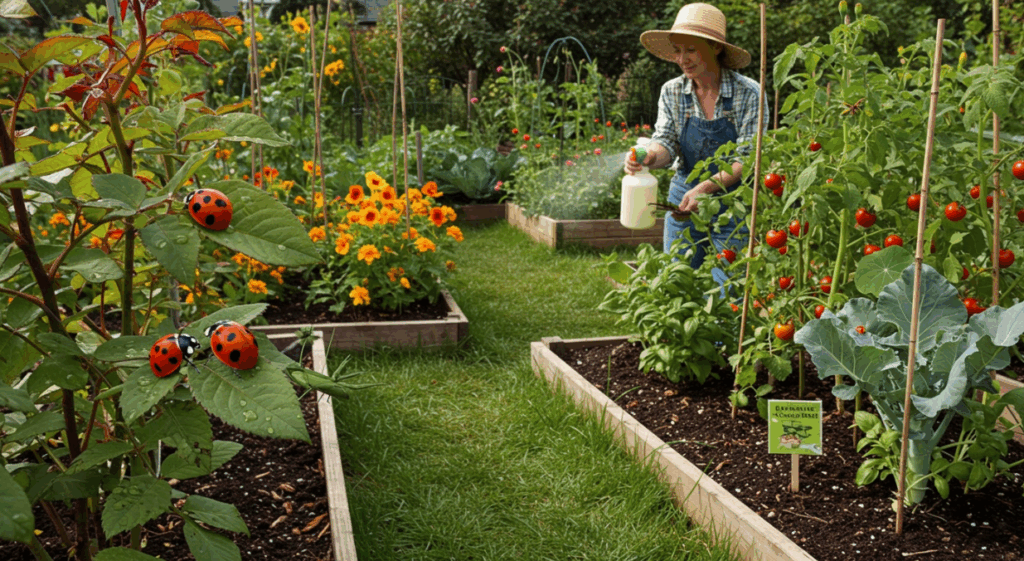
Instead of harmful chemicals, use integrated pest management (IPM) strategies. Introduce beneficial insects like ladybugs and praying mantises. Use neem oil, garlic spray, and diatomaceous earth to deter common pests like aphids, beetles, and caterpillars.
Companion Planting
Plant certain crops together to improve growth and repel pests. For example, marigolds deter nematodes, while basil improves the flavor and health of tomatoes. This age-old practice boosts productivity and minimizes the need for intervention.
Watering and Mulching
Water deeply and less frequently to encourage root growth. Early morning is the best time to water. Mulch your garden with straw, shredded leaves, or grass clippings to retain moisture, suppress weeds, and regulate soil temperature.
Setting Up a Rainwater Collection System
Use a rain barrel to collect runoff from your roof. It’s a cost-effective and eco-friendly way to hydrate your garden. Make sure the container is covered to prevent mosquito breeding.
Harvesting and Maintenance
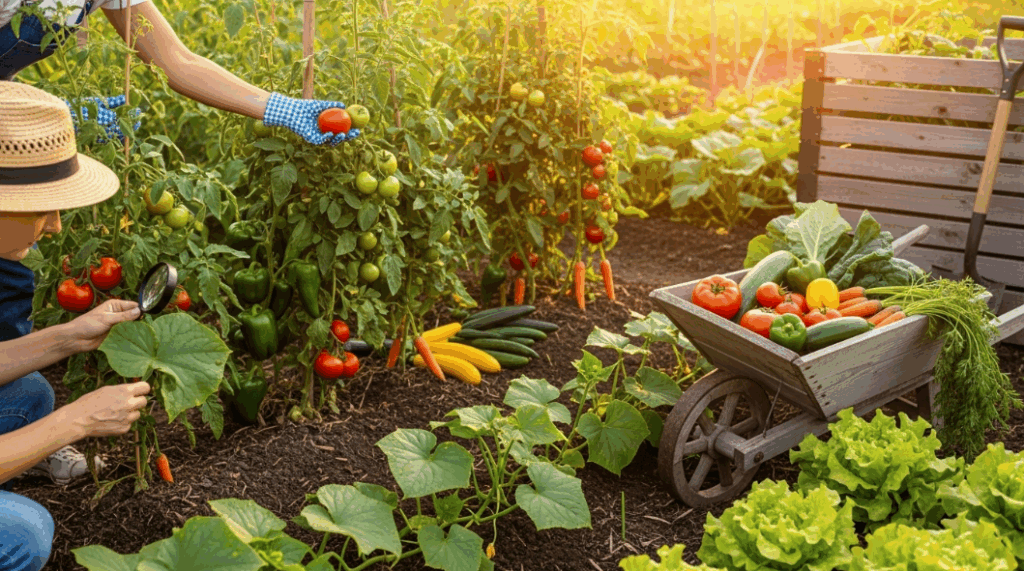



Harvest vegetables when they’re ripe for the best flavor and nutritional value. Regularly inspect your plants for signs of disease or pests. Rotate crops annually and amend your soil with compost to keep your garden fertile and productive.
Seasonal Tips
In spring, plant cool-weather crops like peas and spinach. Summer is great for tomatoes and squash. In fall, try root vegetables like beets and carrots. Winter gardening is possible in mild climates using row covers or cold frames.
Storing and Preserving Your Produce
Store vegetables in a cool, dry place or use preservation methods like canning, drying, or freezing. Herbs can be hung to dry or stored in oil or vinegar. With proper storage, you can enjoy your harvest long after the growing season ends.
Sharing the Bounty
If you grow more than you can use, consider donating to local food banks or starting a produce swap in your neighborhood. Organic gardening builds community and fosters generosity.
Conclusion
Organic vegetable gardening is a rewarding and empowering journey that promotes health, sustainability, and self-sufficiency. By focusing on natural methods, you not only protect the environment but also produce better-tasting, safer food for your family. Whether you’re starting with a few pots on a balcony or a full backyard setup, the principles remain the same. Ready to dig in and grow your own organic paradise?
Start your organic gardening journey today! Bookmark this article and subscribe to our newsletter for monthly gardening tips and organic growing hacks.
| Step | Action | Key Points |
|---|---|---|
| 1 | Planning | Assess space, sunlight, and choose appropriate vegetables |
| 2 | Soil Preparation | Test soil, create organic compost, improve texture |
| 3 | Building Beds | Use raised beds with compost and quality soil mix |
| 4 | Planting & Pest Control | Choose suitable plants, use companion planting and IPM |
| 5 | Watering & Mulching | Deep watering, mulch to retain moisture and regulate temperature |
| 6 | Harvest & Storage | Harvest ripe produce, store properly, preserve excess |
